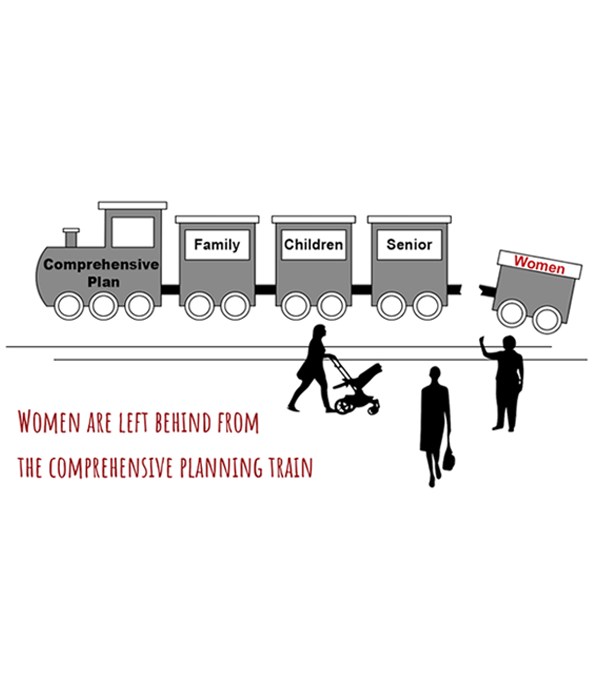Invisible Women in Comprehensive Plans
Chun Xu, Jieyi Jin, Yu Wang, Qianling Liu
Planning in the United States claims to be neutral, but in practice, it targets a small segment of the population and pays inadequate attention to women’s needs. According to national surveys in 2014 and 2019, the proportion of communities which said they address women’s needs in their comprehensive plans increased from 2% to 12%. But how are women’s needs being addressed in plans? We review 80 comprehensive plans from communities that responded to the survey. We identify potential planning interventions that would help create a more gender-responsive environment. We use Natural Language Processing to identify two groups of keywords regarding identities (female, child, senior, etc) and planning elements (housing, land use, transportation, etc) and how they are used in the 80 comprehensive plans. Results reveal that “neutral is not neutral” as women are mentioned the least among all identities, less than family, child, elderly, or even poverty and race. While women’s needs might be addressed indirectly through aging or care provider concerns, the unique needs of women as individuals are not. Comprehensive plans need to be updated to address new concepts such as trip chaining and complete streets, and give attention to safety and care concerns unique to women.
Xu, C., Jin, J., Wang, Y., Liu, Q. (2022). Invisible Women in Comprehensive Plans, Issue Brief. Department of City and Regional Planning, Cornell University.
See Video and Slides of students' presentation at the 2022 APA Virtual National Conference



